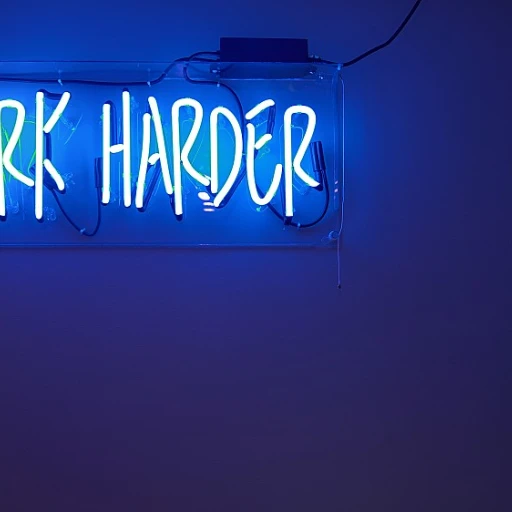
Defining Hazard Assessment
Hazard assessment is a crucial component of ensuring safety in any workplace. It is designed to identify and analyze potential hazards that exist in the work environment, determine the level of risk associated with these hazards, and implement effective control measures to minimize or eliminate the risk of harm to employees. By taking a systematic approach to hazard assessments, businesses can create a safer work environment and protect their workers.
The process of conducting hazard assessments typically involves a detailed evaluation of both the physical and operational aspects of a workplace. This includes inspecting equipment and machinery, assessing chemical hazards, and evaluating the effectiveness of current protective measures like personal protective equipment (PPE). Engaging workers in the process is vital as they are often most knowledgeable about the potential risks associated with their specific job tasks.
Conducting a comprehensive hazard analysis requires know-how and diligence. It involves several key components, including hazard identification, risk assessment, and hazard control measures. A competent person, appointed to lead the assessment, must be familiar with regulations such as OSHA guidelines, to ensure compliance and thoroughness in the process.
While hazard identification focuses on recognizing potential hazards, risk assessment evaluates the likelihood and severity of an incident occurring due to these hazards. This part of the assessment enables businesses to prioritize risks and allocate resources efficiently, ensuring high-risk areas receive the most attention. Implementing hazard control involves establishing control measures that can range from engineering solutions to administrative actions, aimed at reducing or eliminating identified risks.
Hazard assessments are not a one-time task but an ongoing process that requires continuous learning and adaptation to new risks, equipment, and processes. Regular reassessment is necessary to adapt to changes in the workplace and to ensure that control measures remain effective. By understanding the responsibility of hazard assessments, businesses can foster a culture of safety while complying with regulatory standards.
Key Players in Hazard Assessment
Essential Stakeholders in Hazard Assessments
In the complex world of hazard assessments, identifying the right stakeholders is crucial to ensure effective safety protocols. The key players involved in this process are often diverse and bring varied expertise, which is necessary for comprehensive risk assessment and hazard identification.
1. Competent Persons: These individuals are typically responsible for conducting hazard assessments. Their expertise in identifying potential hazards, assessing level risks, and implementing control measures is vital for the safety of the workplace. Competent persons often have specialized training to recognize health hazards and implement effective hazard control strategies.
2. Safety Officers: Charged with the oversight of health safety protocols, safety officers play a pivotal role in workplace assessments. They ensure that employees follow safety guidelines and use personal protective equipment (PPE) when necessary. Their duty includes risk assessments to prioritize potential hazards.
3. Workers and Employees: While they might not be the primary individuals conducting hazard assessments, workers and employees are instrumental in the process. By reporting incidents promptly and participating in safety training, they contribute to hazard identification and hazard control within their job roles.
4. Management: Company management must support safety initiatives by providing necessary resources and implementing safety policies. Their involvement ensures that safety remains a priority and that control measures are enforced. Managers are often involved in the risk management process, facilitating the planning of assessments and ensuring adequate hazard control measures are in place.
5. Regulatory Agencies: Organizations like OSHA provide guidelines and standards for workplace safety. Their role in hazard assessments includes audits and inspections to ensure compliance with established safety regulations.
All these stakeholders must work collaboratively in a hazard management process that is not only about identifying hazards but also about implementing control measures that prioritize workers' protection. For more insights on strategic roles in workforce development, explore this comprehensive guide on workforce strategy.
The Role of Continuous Learning
Embracing Continuous Growth in Hazard Assessment
Continuous learning plays a pivotal role in the ongoing improvement of hazard assessments within the workplace. In an environment where hazards are dynamic and ever-changing, staying updated with the latest safety protocols and regulations is essential to ensure the safety of employees and minimize risks. Incorporating a regular cycle of learning can empower workers to identify potential hazards more effectively and implement appropriate control measures. This approach offers numerous benefits:- Keeping Up with Regulations: Agencies like OSHA frequently update their guidelines concerning hazard assessment and personal protective equipment. Staying informed and adaptable to these changes is crucial for maintaining a safe work environment.
- Enhancing Competency: Employees equipped with up-to-date knowledge on hazard identification and control measures become more competent. This competency supports a more robust method of conducting hazard assessments and ensures all potential risks are considered.
- Improving Safety Culture: A culture of continuous learning fosters an environment where safety is a shared responsibility. This builds a community where every employee actively participates in risk assessment processes.
Challenges in Hazard Assessment
Overcoming Impediments in Hazard Evaluation
Conducting effective hazard assessments is pivotal in maintaining safety standards within the workplace. However, it is not without its challenges. One primary obstacle is the dynamic nature of a work environment. Changes in equipment, processes, and personnel can alter risk levels, necessitating frequent reassessment and adaptation. Moreover, the complexity of identifying potential hazards varies significantly across different industries. For instance, evaluating chemical hazards requires a different expertise compared to physical hazard identification associated with heavy machinery. This highlights the importance of having designated workers—competent persons—who are knowledgeable in risk assessments specific to their field. Another challenge lies in the consistency of hazard control measures being effectively implemented across diverse work settings. Achieving uniformity ensures that personal protective equipment (PPE) and other protective measures are adequately utilized by all employees, reducing health and safety risks. Lack of awareness and insufficient training among employees can also pose significant hurdles to effective hazard assessment. Employees might not be adept at recognizing hazards or understanding the necessity of control measures, which can lead to inadequate safety protocols and increased workplace incidents. To tackle these challenges, organizations must foster a culture of continuous learning and improvement. Regular training sessions and workshops empower employees to stay informed about the latest safety standards and enhance their ability to identify and manage risks efficiently. Additionally, leveraging tools and resources available for effective assessments can aid in addressing these challenges and improving overall workplace safety.Tools and Resources for Effective Assessments
Essential Tools and Resources for Effective Hazard Assessments
Conducting hazard assessments in the workplace requires a robust set of tools and resources to ensure safety and compliance. These tools not only help in identifying potential hazards but also in implementing effective control measures. Here’s a look at some of the essential resources that can aid in this critical process:
- Personal Protective Equipment (PPE): PPE is a fundamental resource in hazard control. It includes items like helmets, gloves, eye protection, and other gear designed to protect workers from specific risks. Ensuring that employees have access to the right PPE is crucial for minimizing health hazards.
- Risk Assessment Software: Utilizing software for risk assessments can streamline the process of hazard identification and control. These tools often come with features that allow for detailed documentation and analysis of workplace hazards, making it easier to implement effective safety measures.
- OSHA Guidelines: The Occupational Safety and Health Administration (OSHA) provides comprehensive guidelines and resources for conducting hazard assessments. These guidelines are invaluable for ensuring that assessments meet regulatory standards and effectively protect workers.
- Training Programs: Continuous learning and training programs are vital for keeping employees informed about the latest safety practices and hazard control techniques. Regular training helps in maintaining a competent workforce capable of conducting thorough hazard assessments.
- Inspection Checklists: Checklists are practical tools for ensuring that all aspects of a job hazard analysis are covered. They help in systematically evaluating potential hazards and ensuring that no critical safety aspect is overlooked.
By leveraging these tools and resources, organizations can enhance their hazard assessment processes, ensuring a safer workplace for all employees. The integration of technology and continuous learning into these processes is key to adapting to new challenges and maintaining high safety standards.












